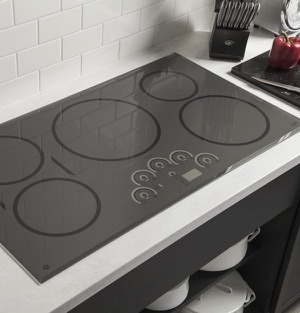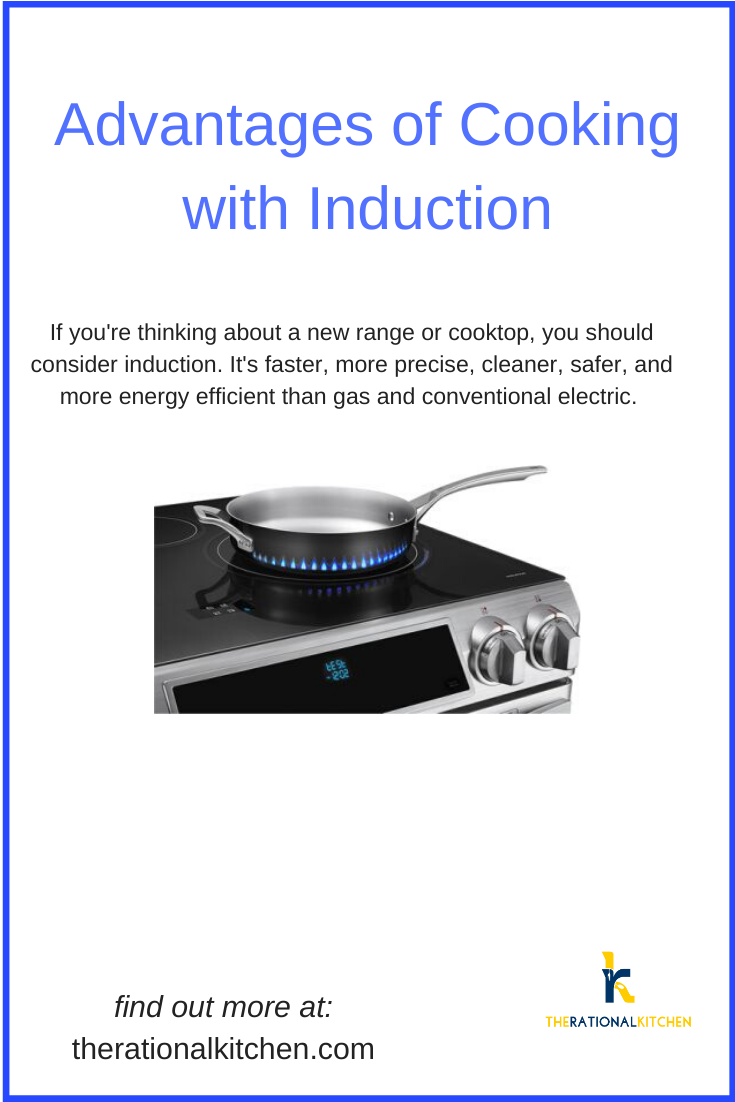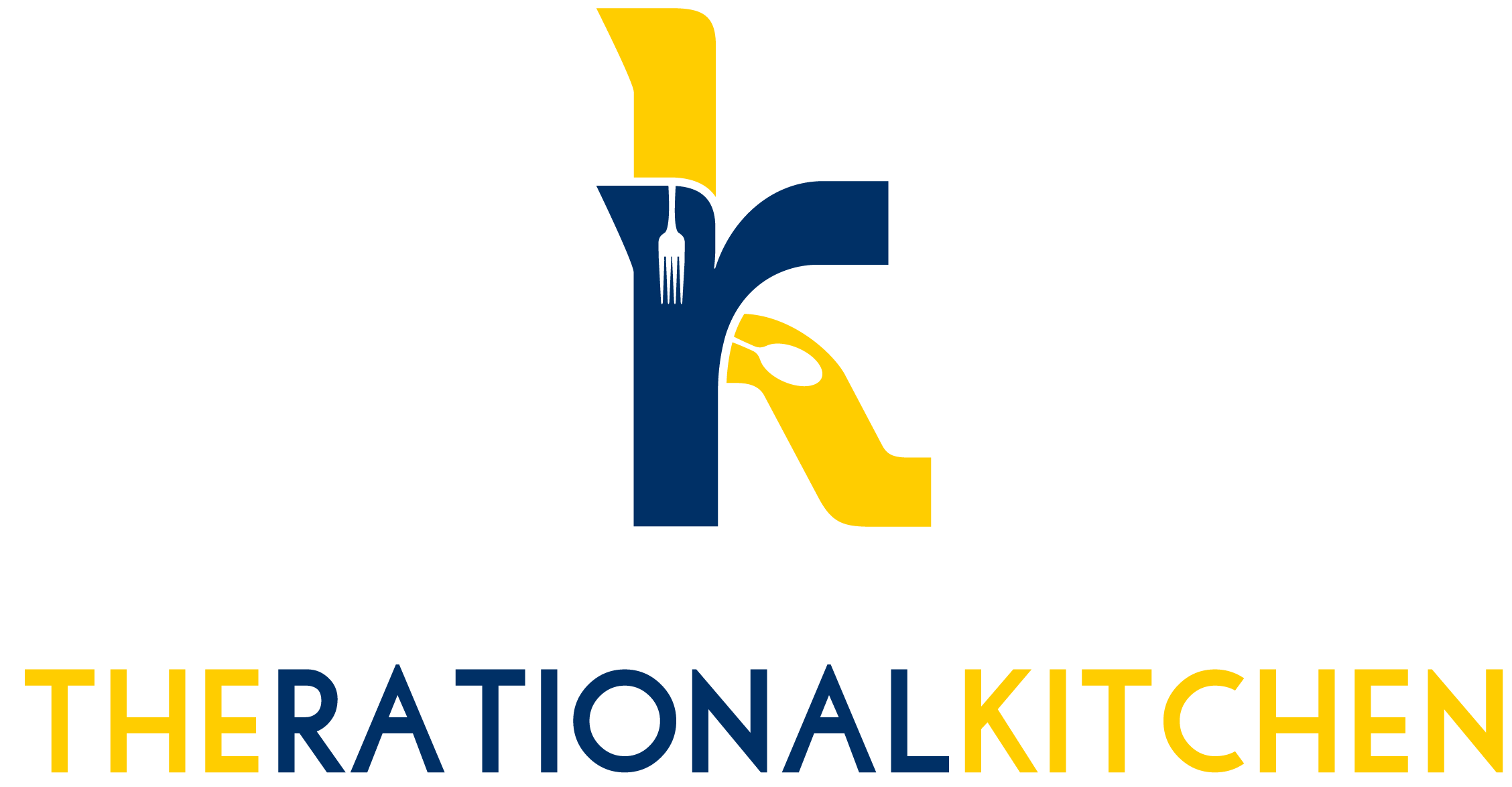If you’ve been thinking about making the switch to induction cooking but have had a hard time figuring out whether it’s worth it or not, we can help you figure out the advantages--and disadvantages--of induction cooking.
Whether you’re remodeling your kitchen, replacing an old stove, looking for a convenient portable cooker, or just want to know more about the technology, this article will help.
If you want to know more, check out our other articles on induction cooking:
Bosch Induction Cooktop Reviews
Duxtop Portable Induction Cooker Reviews
A Guide to the Best Induction Cookware
How Does Induction Cooking Work?
The simplest answer is that induction burners are just big magnets (powerful ones).
More precisely, they are electromagnets: an induction burner is a large coil of wire (or several tiny coils of wire which operate in sync) that, when alternating current is passed through it, creates a magnetic field. This field does not, in itself, generate heat. Rather, heat is generated by the attraction between the ferrous metal in the cookware and the alternating current in the element. In other words, the magnetic cookware induces heat (and yes, this is where the term “induction” originates).

The electromagnet inside an induction burner (from Wikipedia).
The really amazing thing to understand about this is that it is the pot, not the stove, that does the cooking. Remove the pot and the reaction stops instantaneously. The overall result of this is cooler, more efficient, and safer cooking, all of which is discussed in more detail below.
There’s more that could be said about induction technology, but it's not necessary to understand all the science behind it in order to appreciate it. The most important thing to remember here is that if you have electricity, you can have an induction stove. If you want more details, you could do Google searches on topics like induction cooking, electromagnetism, and heat transfer (these Wikipedia links are a good place to start). But you really don’t need to know any of that stuff in order to use induction.
Is Induction Cooking Safe?
Safety is one of the great advantages to cooking with induction. Cooler burners and built-in features like burner lock and auto-off (after a period of inactivity or because of overheating) make induction the safest cooking technology available.
Over the years, however, concerns have been raised in two areas: induction stoves are said to emit dangerous levels of electromagnetic frequencies (EMFs), and to interfere with pacemakers.
Could the magnetic field of an induction cooktop interfere with pacemaker operation? Yes, possibly. It depends on a number of factors that are beyond the scope of this article. If pacemakers are a concern for you, consult a doctor before investing in any induction cooking device.
As for EMFs, our belief, arrived at through much research, is that induction technology is completely safe, and does not cause harm to humans. However, this is a complex and controversial topic, so much so that Rational Kitchen has a more in-depth discussion about induction safety.
Is Induction Better than Gas and Electric?

Induction cooktops are completely smooth and don't get very hot, so they're easy to clean.
The answer to this question is subjective. Some people will never give up their beloved gas stoves, and some will prefer electric for any number of reasons (it's cheaper, it's familiar, etc.). You'll have to arrive at your own conclusion through research and knowing what best fits your personal style.
But for people who don’t have access to gas stoves, the advantages to cooking with induction provide an option for them to experience the precision and instantaneous control of a gas cooktop, which is a big plus for a lot of cooks who would otherwise feel stuck with an electric stove.
So the upshot is this: If you have a gas stove, you have a harder decision to make. If you do not have a gas stove, induction is a no-brainer for most cooks!
Which Induction Cooktops Are Best?
Again, this is largely a matter of preference. We give our favorites and explain why we picked them--but maybe you have different needs and preferences. If so, ask your questions in the comments section below, do some more Google searching, or go to an appliance dealer and try some out in person.
Only you can decide what best fits your needs, lifestyle, and budget.
Advantages of Induction Cooking
These are the main advantages to cooking with induction. You may think of others, but these are the ones we think are the most useful.
Instantaneous Adjustment
The biggest complaint people have about conventional electric cooking is its slowness. It takes a long time to get to temperature, to adjust temperature, and to cool off when you're done cooking. This is not the case with gas, and really not the case with induction. In fact, induction gives you the best of both worlds: the responsiveness of gas and the convenience of electric. Because the heating elements themselves do not retain heat, there is less residual heat even than with gas--this makes induction cooking even more precise and easier to control than gas.
Efficiency
Because the pans heat and the burners do not, cooking with induction is more efficient than gas and conventional electric. Some sources say induction is up to 90% more efficient. However, according to Wikipedia, a 2014 study done by the U.S. Department of Energy found that induction had 70.7-71.9% efficiency, electric coil had 71.9%, and gas had 43.9%. This means that of the heat generated by each element, this is the percentage that actually went into the food (rather than the ambient air).
While these things can be difficult to measure with complete accuracy, this study suggests that induction cooking is indeed an efficient way to cook--perhaps about the same as conventional electric.
Does this make cooking with induction less expensive? There are mixed reviews on this topic. Some manufacturers claim huge savings on energy bills, but most users say the difference is small. However, because induction cooking is faster, more precise, and cooler than gas or electric, it certainly provides other efficiencies. It might get you in and out of the kitchen faster, it won't heat up your kitchen as much, and you will probably use less energy even if you don’t notice a huge difference in your bill. These are all pluses of induction stoves.
A Cooler Kitchen
Because induction heats pans and not burners, kitchens stay cooler. Heat lost to ambient air during induction cooking is negligible, which keeps kitchens more comfortable to work in. You may also save on other costs such as ventilation, which isn’t as necessary when cooking with induction because of the lower heat loss to the environment (though you will still want ventilation to remove particles of cooking oils and foods).
Easier to Clean
And here we get into the true beauty and functionality of induction cooking. After all, no matter how much you may love cooking, it’s unlikely that you love the cleaning up afterward. Induction cooking is by far the cleanest and easiest way to cook. Here’s why:
- Because the cooktop itself generates very little heat, food and cooking splatters won't cook onto the surface. This makes it very easy to clean.
- Most induction cooktops and ranges have touch controls built into the glass top, so you only have one surface to keep clean--no burners or knobs to futz with. And the only crevice for food to get into is the one around the edge (which some models do not even have!).
- Also because there is so little heat generated, you can actually place paper towels or newspapers on the surface while you cook! So if you're doing something messy, the paper will soak up most of the splatters. Here's a youtube.com video that demonstrates the paper-under-the-pan technique that is only possible with induction cooking:
It's Safer Than Gas or Electric
Induction cooking is inherently safer because burners don’t get as hot. In addition, induction products have a number of safety features such as pot sensors, auto shutoff, control locks, and timers to ensure a safe cooking environment. Burners also will not switch on without an induction-compatible pot on them--but even if they did, they typically don't get hot enough to burn anyone’s little fingers.
Gas stoves have also come under fire recently for being major factors in indoor air pollution. The combustion of natural gas may create unhealthy gases that you want to avoid inhaling. One study shows that kids who grow up in homes with gas stoves have a higher rate of asthma.
We aren't entirely convinced that this is the case, especially when you use proper ventilation with a gas stove, and more research is definitely required to be sure--so don't panic and get rid of your gas stove, because it's unlikely that there's any serious issues with proper gas cooking.
The "Cool" Factor
Kitchens aren't just utilitarian rooms used for cooking. They've become modern showcase rooms for design, and in large part a measure of how much status your home has. Being cutting edge technology gives induction status: the kitchen version of having a Tesla or huge, high def TV. So much so, in fact, that many people still don’t even know what induction is--but give them a demo on how fast it can boil a quart of water, and they’ll walk away shaking their heads in wonder and making you feel good about your purchase.
Induction cooktops and stoves are, if nothing else, sleek. The smooth top, with its incorporated controls, is a poster child of culinary modernity. You can get this look with conventional electric, but it doesn’t have the same cool factor--or the same usability.
Disadvantages of Induction Cooking
Here are some of the negatives about induction to consider:
Price
Induction cooktops and ranges cost more than comparable electric or gas technology, and is likely the reason it's been slow to catch on in the U.S. as a standard cooking technology. (This is not the case with portable induction cookers, however, which have sold by the millions--but unless they're very high end, they aren't robust enough to replace a gas or electric stovetop.) However, prices have come down, and you can now get an induction cooktop or range for not much more than conventional electric or gas. You can also get a portable induction burner for less than $100 if you want to try it out before making a bigger investment (although it won't be nearly as accurate or robust as a full-sized range).
You may also have to invest in induction-compatible cookware, although you probably already own at least one or two pans that will work (more on this below).
Noise
Some people complain that their induction burners sometimes hum or buzz. This is usually caused by the fan inside the cooktop that cools the electromagnets. The noise is often compared to the cooling fan on a computer. It might take some getting used to, but generally isn’t a deal breaker for most people. Inexpensive portable induction burners are usually the worst offenders.
Certain pans can also cause an induction burner to emit a high-pitched squealing sound. This can be caused by warped pan bottoms or the layers of clad pans heating at different rates, and it also seems most common on inexpensive portable induction burners.
Using good quality cookware on a full-sized induction cooktop shouldn't present a problem with noise.
Pan Size
When using induction, it's important to match pans to the burner size. If you place a small pan on a large burner or a large pan on a small burner, the induction circuit may not close and you won't get any heat. And if you are concerned about EMF emissions, it is particularly important to not use a small pan on a large burner, because the exposed part of the burner emits more EMFs (though probably not an unsafe amount).
It's always a good idea to match pans to burner size, but with induction, it can be vital to getting the results you want.
Learning Curve
Induction is a new technology for many Americans (not the case in Europe, India, and the Far East, where induction cooking is extremely popular, largely because natural gas is much more expensive there), and it has options unavailable on either conventional electric or gas.
Induction cooktops can seem quirky at first: requiring magnetic cookware, being fussy about pan size, and shutting off automatically if you remove the pot for more than a few seconds. Also, the bridge element and power boost features unique to induction cooktops require some getting used to.
A more common issue is that you may need some time to get a feel for how fast and precise induction cooking really is, particularly if you’ve switched from electric. Induction is so fast that if you think you can walk away from a heating pan like you do with gas or conventional electric, you're bound to burn a few things or warp a few pans before you learn. Yes: induction is that much faster.
None of these things are really disadvantages--in fact, they are more advantages of cooking with induction--but they do have a learning curve.
Touchpad Controls
Touchpad controls are great in a lot of ways--they look great, for example, with a sleek, modern aesthetic. But they can be slower to operate, and might be annoying if you’ve been turning a knob all your life. Touchpads are, we believe, one of the great disadvantages of all electronic, computerized appliances. They are almost always more cumbersome to use, and if anything goes wrong with them, they can cost hundreds of dollars to repair.
However, computerized appliances are the future. In another decade, you probably may not be able to find an old-fashioned knob on a stove, washing machine, or dishwasher. And, the interfaces continue to get better--that is, faster, easier, and more intuitive to use.
When buying any touchpad-controlled appliance, we strongly suggest that you make sure you can live with the interface. If you just try it once, you might think, “Oh, this is easy to use! No problem!” But stop and think about how you will use the appliance in real life. How long does it take to power on? How many presses does it take to adjust a setting? How often will you have to make several adjustments at once, and how long will this take? All of these are important factors for everyday use.
Some touchpad controls also don't work when a cooktop is wet, which of course can happen easily from wiping it off, steam, or a pot boiling over. This can be extremely frustrating and even unsafe, so test this out before you decide that touchpad controls will work for you.
Special Cookware
Maybe the biggest disadvantage of cooking with induction is that it requires induction-compatible cookware. Magnetic cookware, that is. This means that aluminum, old stainless steel, copper, and 100% stoneware are all unusable. Because these aren't magnetic metals, they simply won’t get hot on an induction stove.
The good news is that most of us already own at least some induction-compatible cookware. Cast iron, including enameled cast-iron, works with induction. And most new stainless steel cookware (that made in the last 20 years or so) has a ferrous outer layer that makes it excellent for induction cooking (many All-Clad lines, for example). Even many aluminum pans now have a steel bottom so you can use them with induction. However, you have to be careful, because cheap pans that claim to be induction compatible aren't always so: they have to be not only magnetic, but strongly magnetic. So not all cookware with a "magnetic" base will work well with induction. If you're looking at induction compatible aluminum pans, be sure to read the review to see if there are complaints about their induction compatibility.
Use a magnet to check your pans: if it sticks--strongly--then the pan is induction compatible.
Most cookware manufacturers now list whether a pan is induction compatible. If they don’t, you can ask, or use the magnet test. And remember, read the reviews, because not all "induction compatible" pans work well with induction.
For more information, check out our article, A Guide to the Best Induction Cookware.
The Glass Surface Can Scratch or Crack
Induction cooktops are made of a tough, heat-tempered glass-ceramic composite that is much more durable than glass alone. (This is true even of the lowest end portable burners.) However, they can scratch and crack, so you have to be careful with them. For example, you don’t want to do a lot of scraping of pans along the surface, which can cause scratches, or set a pan down too heavily, which can cause cracking.
There is, however, an extremely simple fix to prevent scratches: lay a paper towel, newspaper, or piece of parchment paper under the pan! You can do this on induction, remember, because the burners don’t get hot (see the video above). Not only will you eliminate scratching, you will also make cleanup as easy as throwing away the paper towel or newspaper.
Burners Don’t Turn On or Stay On
In most cases, these problems go back to the learning curve issue. If you place the wrong-sized pan on a burner, or an empty pan, then the burner may not turn on; it might flash an error code at you or simply do nothing. For many induction burners, the pan has to be within an inch of the size of the burner. And some burners won't turn on if a pan is too small, particularly if the pan's magnetic properties aren't very strong. Sometimes, people complain that the burner just turns itself off without warning. But they may have forgotten that they lifted the pan up, or set a timer for the burner, or that the burner will shut off if it overheats, or if it detects a spill--a feature that can sometimes be triggered by small amounts of moisture on the cooktop (like from steam condensation).
As neat (and safe) as these automatic features are, they really do require a learning curve. In most cases, complaints like these are the result of people not having fully learned how to use induction technology yet. And if they do indicate a malfunction, it could be related to electrical wiring, a voltage surge, or the type of cookware you're using (such as cheap aluminum with a weak magnetic base). Reading the manual might fix many of these “mystery” issues.
"More to Go Wrong"
Because induction burners are electronically controlled, there's more to go wrong than there is with most gas stoves. And when things do go wrong, repairs can be expensive.
However, this is true of most new appliances. You're going to have to deal with this issue on washers, dryers, refrigerators, water heaters, furnaces, even cars. And it is also true for electric stoves and cooktops. So once again, if gas is an option for you, you may want to hold off on an induction stove or cooktop.
Possible Resale Issues
Some people are concerned that induction will be a negative factor when selling their house. It's such a new technology that many people don't understand what it is, and they think they'd be stuck with a yucky electric range instead of a responsive gas one. Having to explain the difference to potential buyers may not be something you trust your realtor to do.
We honestly believe this is a moot point--as long as you let your potential buyers know that you've got kitchen technology even better than gas. Induction is catching on, and within a few years, most people should be familiar with it, even if they haven't used it.
Induction Cooking FAQs
Here are some commonly asked question about induction cooking (though most of these questions are answered above).
Is Induction Cooking Safe?
Yes, induction cooking is a very safe cooking method. It's cooler than gas and electric, but may cause issues with pacemakers, so consult a doctor if that is a concern.
Is Induction Cooking Better than Gas?
This is a personal preference, but induction is just as fast and even more precise than gas. However, induction stoves and cooktops tend to be more expensive, so there are both pluses and minuses.
What Special Cookware Do You Need?
Induction works by magnetism, so your cookware has to be magnetic. This includes cast iron, carbon steel, most clad stainless steel (though some older clad stainless is not magnetic). Aluminum, copper, and 100% stoneware do not work with induction, although a lot of modern cookware has a magnetic plate on the bottom to fix that issue. Also, some magnetic plates are weak, especially on cheaper cookware--so read reviews or check the cookware out yourself to make sure you're satisfied with how it works on your induction stove.
Are Induction Ranges More Expensive than Other Stoves?
In most cases, yes. Full-sized induction ranges and cooktops are more expensive than gas or electric. We're not sure why, but induction is still fairly new technology and a small segment of the cooktop market. Prices have come down on some models, but you will probably pay more for an induction range than for gas or electric. Most portable induction cooktops are inexpensive--around $100--but they don't provide the precision and control that a full-sized induction cooktop can (unless you get an expensive model, some of which can cost as much as a full-sized range).
Final Thoughts
There are many advantages to cooking with induction. It's a fast, easy, convenient way to cook. The technology is still a little spendy, but most people who try it love it, especially if their only other choice is conventional electric cooking.
Thanks for reading!
Help other people buy wisely, too! Please share this article:



I currently have a gas stove in my house but I was wondering what the advantages to an induction stove were and if I should replace mine. I like that the heat can be easily adjusted and that is is much easier to clean. Another big factor is that induction is more eco-friendly because it isn’t powered by the burning of gas.
If you already have gas, it’s a harder choice than if your only option is electric. If you’re serious about it, first look into the cost of wiring for an electric stove. If this is feasible, then the next step might be to try an inexpensive portable induction burner and see if you like it. Of course, the portable can’t mimic the power and responsivity of a full-sized range or cooktop, but it will give you an idea of what you’re in for. We have reviews here on this site for portable burners, as well as stoves and cooktops which might also help you make a decision. Finally, a lot of it seems to come down to personal preference. Some people think induction is “cold” because it lacks the feedback of a gas flame. I personally love it and think the precision, speed, and ease of care makes up for the lack of flame in a big way. It is SO much easier to clean than my gas range that I can’t imagine ever going back to that! Best of luck in your research and please let me know if there’s anything more I can help with.